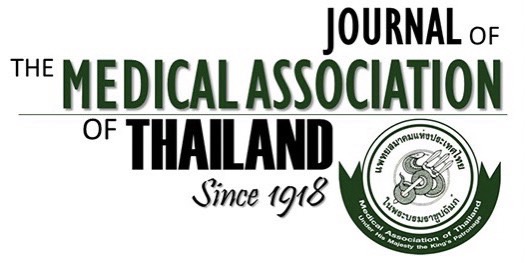The Thai Anesthesia Incident Monitoring Study (Thai AIMS) of Endobronchial Intubation: An Analysis of 1996 Incident Reports
Krairerk Sintavanuruk MD*, Oraluxna Rodanant MD**, Intiporn Kositanurit MD***, Phuping Akavipat MD****, Aksorn Pulnitiporn MD*****, Wimonrat Sriraj MD******
Affiliation : * Department of Anesthesiology, Charoenkrung Pracharak Hospital, Bangkok ** Department of Anesthesiology, Chulalongkorn University, Bangkok *** Department of Anesthesiology, Naresuan University, Phitsanulok ****Department of Anesthesiology, Prasat Neurological Institute, Ministry of Public Health, Bangkok ***** Department of Anesthesiology, Khon Kaen Regional Hospital, Khon Kaen ****** Department of Anesthesiology, Khon Kaen University, Khon Kaen
Objective : To analyze the clinical course, outcomes, contributing factor, corrective and preventive strategies
of accidental endobroncheal intubation (EBI) in the Thai Anesthesia Incident Monitoring Study (Thai AIMS).
Material and Method: This was a prospective descriptive multicenter study of anesthesia-related adverse
incidents from 51 hospitals across Thailand from January to June 2007. Possible accidental EBI data were
extracted and analyzed using descriptive statistics by 3 reviewers.
Results : Thirty-two cases (1.6%) of EBI were reported from a total of 1,996 Thai AIMS incidents. EBI occurred
more often in females (71.9%). Most of the incidents happened in the operating theater (93.8%) and the
most common surgical specialties were general and gynecological surgery (20.6% each). Two cases had
hypoxemia and 1 case required respiratory supported postoperatively. Most incidents (65.6%) were first
recognized via monitoring equipment which was detected by pulse oximeter (71.4%) and airway pressure
measurement (4.8%). Ninety six percent of cases were considered preventable. Anesthetic factors and system
factors were found to involve in 62.5% and 11.8% of incidents respectively. The major contributing factors
were inexperience of the performers (84.4%), lack of knowledge (40.6%), haste (21.9%) and communication
failure (9.4%). The incident would be minimized by having prior experience of incident, high awareness and
experienced assistants available. Three main strategies to prevent the incident included additional training,
improvement supervision and established guideline practice.
Conclusion : Accidental endobronchial intubation was reported as 1.6% of anesthetic adverse event in Thai
AIMS. Majority of the incidents were contributed by anesthesia and system factors. High awareness, experience
of performers and additional training would decrease the incidents and improve anesthetic outcome.
Keywords : Anesthesia, Complication, Endobronchial intubation, Incident report, Patient safety



